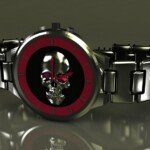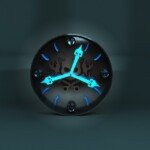CNC Accuracy: The cornerstone of precise manufacturing
In the competitive environment of modern manufacturing, CNC (Computer Numerical Control) processing is the pillar of innovation and productivity. But its real power lies not only in automation, but also in its ability to achieve significant levels of success accuracy. For engineers, designers and procurement experts who need precise components, it is crucial to understand the power of CNC accuracy. This is a perfect match between a part that fits in complex components and parts that lead to expensive delays or failures.
exist GreatAt the forefront of precise machining with advanced five-axis CNC capabilities, we understand that CNC accuracy is not a switch. This is the harmonious interaction of many key factors. Achieve consistent, tight tolerances – until micron fractions in demanding applications require consistent control throughout the process. Here we dissect the main elements that determine the accuracy of the CNC machine to convert digital blueprints into tangible, high-performance components.
Key factors that control the accuracy of CNC machines:
-
Machine tool quality, stiffness and calibration:
The basis of precision begins with the machine itself. Advanced, rigid castings, ground and hardening methods, and precise linear guidance minimize deflection under cutting forces. Spindle accuracy and pulsation are crucial, directly affecting surface finish and dimensional compliance. It is crucial that Normal calibration It is not negotiable. This includes verification of axis alignment (Querments, soollaselist), spindle truth, ball screw accuracy, rebound compensation and probe calibration. Even the most complex machines can produce poor results if they are well maintained or have poor calibration. At Greatlight, our investment in advanced 5-axis hardware is matched with a strong calibration protocol, ensuring our devices always operate in certified accuracy specifications.
-
Tools: Selection, Wear and Management:
The cutting tool is a direct interface with the workpiece. Accuracy is deeply affected by the following:
- Tool quality: Materials (carbides, HSS, ceramics), geometry, coatings and manufacturing accuracy all affect performance and wear characteristics. Accurate ground inserts, balanced tool holders (especially critical on 5-axis machines), and contraction of appropriate or hydraulic Chucks to minimize jumps.
- Tool wear: Progressive tool passivation changes tool geometry, increases cutting force (causing deflection), generates more heat and reduces the finish. Implementing predictive wear monitoring and a rigorous tool life management plan is critical to consistent results.
- Tool path-centric choice: Tools must not only be selected for the material, but also for specific operations and tool paths for programming. Reduced clearance and chip evacuation strategies can affect potential deflection and vibration. Greatlight utilizes a comprehensive tool strategy, selects high-quality cutting tools and implements rigorous wear monitoring to maintain accuracy throughout the production process.
-
Material properties and stability:
The behavior of workpiece materials during processing is a major determinant of accuracy:
- Inherent features: Hardness, grain structure, homogeneity and thermal conductivity will affect processability. Brittleness and ductile materials react differently to cutting forces.
- Thermal expansion: Processing produces heat. The material expands as the temperature rises and shrinks after cooling. Once the part is stable at ambient temperature, the inability to manage heat (through coolant, process parameters) or calculate the offset of the measured heat shift may result in dimensional errors.
- Internal pressure: Materials, especially castings or materials that may lock in the residual stresses. Processing reduces these uneven pressures, causing the component to rotate after bent. Techniques such as stress therapy treatment or operational strategic sequencing are crucial.
- Fixation and vibration: Labor solutions must securely secure the material without causing excessive clamping stress, which can deform thin walls or twist parts upon release. Vibration (chat) during cutting is the main enemy of accuracy and surface quality.
-
Programming, CAD/CAM and toolpaths:
Digital instructions that drive the machine are crucial. Precision traps include:
- CAD model fidelity: Imple perfect geometric shapes or tolerance mismatch between design model and production intention.
- CAM Strategy: Choosing the appropriate machining strategy (rough, finishing), stepping, cutting direction, participation angle and entry/exit action can significantly affect the pressure on the tool and part. Non-optimal paths can lead to deflection, tremor and poor finishes, all with degraded accuracy.
- Controller interpolation accuracy: How a machine controller interprets complex curves as how the way the axis moves affects the finish. High-end controllers provide advanced algorithms to provide smoother and more accurate paths.
- compensation: Successful programs must effectively compensate for factors such as tool nose radius, tool deflection prediction, and even machine/cutter/workpiece vibration signatures. Our 5-axis programming team utilizes state-of-the-art cam systems and expertise to generate optimized high-precision tool paths to account for deflection and thermal effects.
-
Environmental control and thermal stability:
CNC machines are susceptible to their operating environment:
- Temperature fluctuations: Changes in ambient temperature, sunlight, drafts, and heat generated during processing can cause slight expansion and contraction of the components of the machine’s structural parts. These thermal offsets are directly converted into positioning errors. Maintaining a stable, climate-controlled environment is crucial for micro-precision work.
- vibration: External vibrations of nearby equipment, forklifts and even building structures can subtly affect machine positioning and surface finishing. A basic or strategic isolation mechanism for vibration damping is necessary.
- clean: Dust, debris and coolant mist build up can penetrate the guide and lead screws, accelerating wear and potentially causing unstable movement. Greatlight prioritizes optimal facility conditions to mitigate external impacts on machining accuracy.
- Operator experience and process control:
Technology is not foolproof. Human expertise remains crucial:
- Proficient settings: Correct fixation, tool loading, workpiece alignment (reference setting) and process parameter adjustment require keen experience to perform correctly, especially for complex 5-axis jobs.
- Process Check: Use touch probes or manual measurements to perform regular measurement checks during production, allowing early detection and correction of drift before completing the entire specification.
- Process Monitoring: Observing machine sound, cutter performance, and chip formation can provide experienced operators with early warnings about potential issues that affect accuracy. Greatlight combines state-of-the-art machine monitoring technology with the profound experience of our technicians to ensure that each process variable is controlled.
Conclusion: Precision as a process, not a number
Achieving high CNC accuracy is not magic. This is the result of strict engineering at each stage, strict process control, and a firm focus on details. It requires understanding of machine integrity, tool management, material behavior, excellent programming, environmental stability and human expertise interconnection.
At Greatlight, we utilize advanced five-axis CNC machines and deep production proprietary technologies as powerful and precise tools. But more importantly, we revolve around understanding that true accuracy comes from control all The interdependence factors outlined above. We specialize in the metal parts manufacturing industry by directly addressing these challenges to enable dimensional accuracy that is critical to your high-performance applications. A well-cooperated partner can bring confidence through reliable and efficient manufacturing of components with the highest accuracy standards. Select accuracy, select reliability – Customize precision parts with Greatlight CNC now.
Frequently Asked Questions about CNC Accuracy (FAQ)
Q1: What is the typical accuracy that modern CNC machines can achieve?
A: Although it depends largely on machine quality, setup and discussion factors, modern high-precision machining centers (such as the five-axis equipment at Greatlight) can achieve position accuracy of 5-20 microns (0.0002" -0.0008") or higher, having repetitiveness usually exceeds this. Fine tolerances can be achieved under highly optimized conditions. Always discuss your specific tolerance requirements.
Q2: How to improve accuracy in five-axis CNC machining?
A: 5-axis machining reduces or eliminates the need for multiple settings, as the workpiece can be displayed at complex angles in a single retention amount. This minimizes errors in fixed position, reference re-establishment and accumulation of stacking tolerances, which are inherent in multi-setting jobs on 3-axis computers. Complex geometric shapes can also usually be implemented more directly and accurately.
Q3: Why does CNC machines require continuous calibration?
A: CNC machines wear in mechanical components such as mechanical components (such as ball screws and guides). They are also susceptible to thermal drifts, which can have a smaller impact on daily use. Conventional calibrations detect and compensate for these gradual changes, ensuring that the machine’s positioning feedback loop accurately reflects the actual position of the tool tip in space.
Question 4: Is it possible to process any material to the same level of accuracy?
A: Material properties can significantly affect the achievable accuracy. Hardened hardened materials, such as hardened tool steel, can maintain very tight tolerances, but are more challenging to the machine. The soft fudge material may deform under clamping or cutting forces. Highly abrasive materials can cause rapid tool wear, which affects consistency. Design and processing strategies must adapt to the materials. Discuss substance selection and tolerances with your manufacturing partner.
Q5: How does the temperature affect my last part?
Answer: The metal expands when heated. If the parts are measured while still warm in processing, or the machine environment fluctuates significantly during production, thermal expansion/contraction will result in the measured size different from the final cooling section. Before final inspection, properly cool and allow the parts to stabilize at ambient temperature. Thermal effects must be considered in the process planning.
Question 6: What role does metrology play in ensuring CNC accuracy?
Answer: Metrics (measurement science) is absolutely crucial. Accurate CNC machining relies on precise process detection for part position and uses calibration equipment (CMMS, altimeter, optical comparator, surface tester) for part verification, accurate tool setup, and rigorous first-part inspection and final inspection. You have no control over what you cannot measure.

















